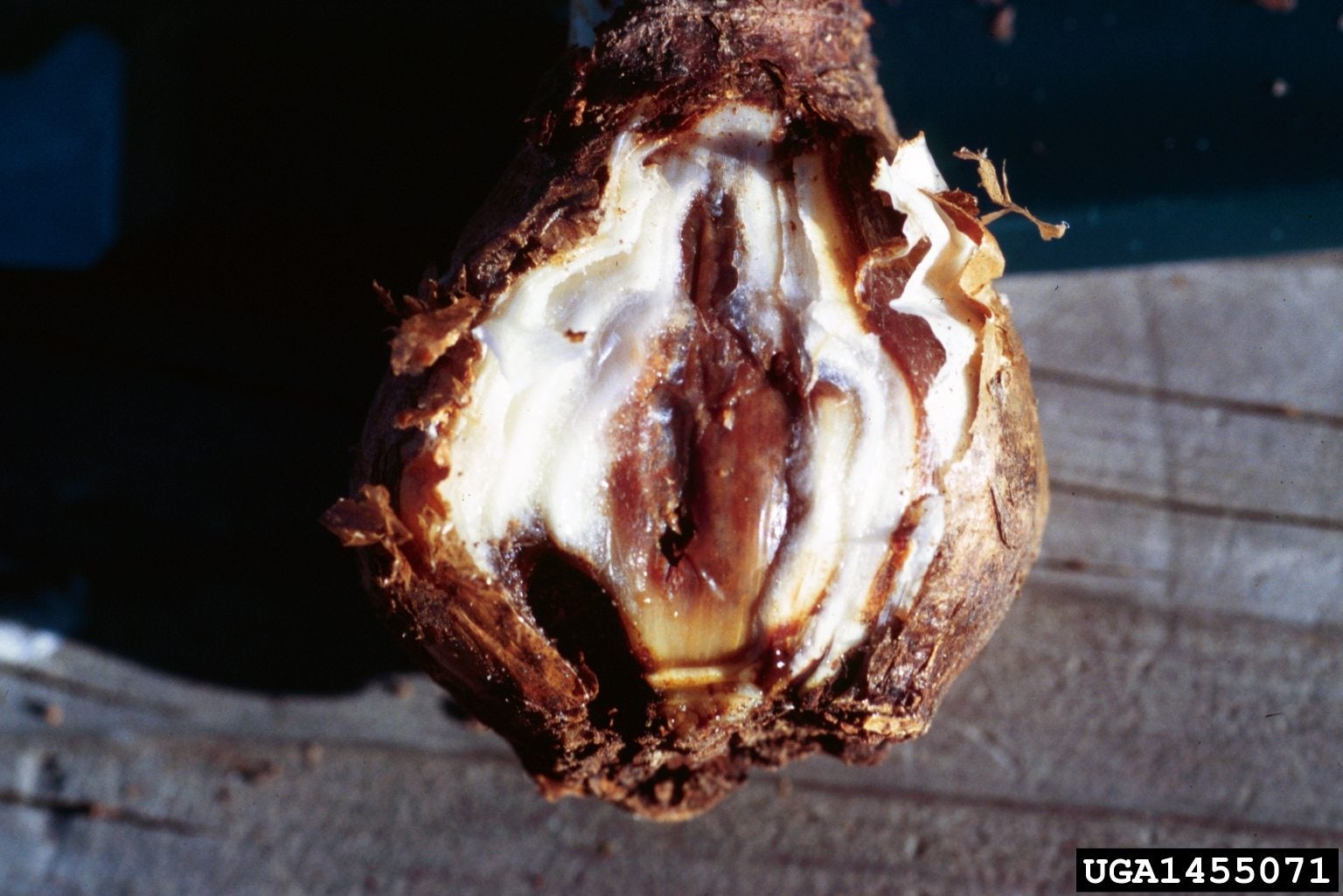Flower Bulb Pests: How To Prevent Pests In Flower Bulbs


Growing flowers from bulbs ensure that you have bright, interesting color year after year, even if they don’t last very long. Sometimes those low-care plants get a little bit more complicated when bugs infest your stored or actively growing flower bulbs. What can you do when flower bulb bugs become an issue? Don’t worry, this article will tell you what you need to know about bugs that eat flower bulbs and how to prevent pests in flower bulbs. Read on to learn more!
Insects That Feed on Flower Bulbs
Flower bulb pests are inevitable if you grow any significant number of bulbs for any amount of time. The trick is to not panic when you encounter them. All's not lost when you come across bugs that eat flower bulbs, you just need to know how to handle them. Below, you’ll find a list of the most common pests and some tricks for dealing with them: Aphids. Aphids feed on bulbs both in storage and during the growing season. Their activities can result in weak growth and leaves with yellowish or brown tips. The injured plants may not be able to fully flower or, if they do, the flower is somehow disfigured. Aphids are one of the easier flower bulb pests to control; you don’t even need pesticide. A forceful stream of water can blow them far away from your plants. If you repeat this daily, the colony won’t be able to re-establish itself. Watch out for ants, which often tend to aphid colonies. If they’re present, you’ll need to bait them as well. Bulb Mites. Although not technically an insect, bulb mites are serious problems for bulbs. These tiny, yellow-white, and slow-moving creatures feed by puncturing the bulb and sucking out the fluid inside. This ultimately causes bulbs to develop soft, dying areas that may then become infected with opportunistic mold or bacterial pathogens. Once you have mites, they’re hard to shake, so destroy any infested bulbs as soon as you spot them. You can dip clean bulbs in water that’s at least 120 degrees F. (49 C.) for two minutes to kill any mites that might be present. Careful bulb handling also helps to avoid contamination. Thrips. These tiny, slender, tan to dark brown insects tend to hide in protected areas of the plant and scrape surface cells off of plant materials, including bulbs, to feed. Their feeding sometimes gives surfaces a brown or silvery sheen, specks, or streaks. Thrips are readily controlled with a combination of insecticidal soap applications and bright yellow sticky traps placed close to affected bulbs. Beneficial insects will do the rest. Bulb Flies. If you notice dark blue flies with a metallic bronze sheen around your bulbs, it’s important to check for bulb fly larvae. Their maggots will tunnel through bulbs, causing them to decay rapidly, killing or heavily damaging your plants. They overwinter in your bulbs, then emerge as adults, mate, and return to the bulbs they came from to lay their eggs. Your first line of defense is to carefully examine bulbs each time you divide your plants. If any are soft, destroy them immediately. Slightly damaged bulbs can be treated by placing them in water above 109 degrees F. (43 C.) for three hours to kill any larvae that may be present. Mowing the leaves of your bulb plants as soon as they dry out and lightly tilling the soil after mowing to destroy the openings that adult females use to locate the bulbs can also help reduce populations.
Sign up for the Gardening Know How newsletter today and receive a free copy of our e-book "How to Grow Delicious Tomatoes".

Kristi Waterworth was a regular contributor to Gardening Know How for many years, answering countless queries on plant pests and diseases.